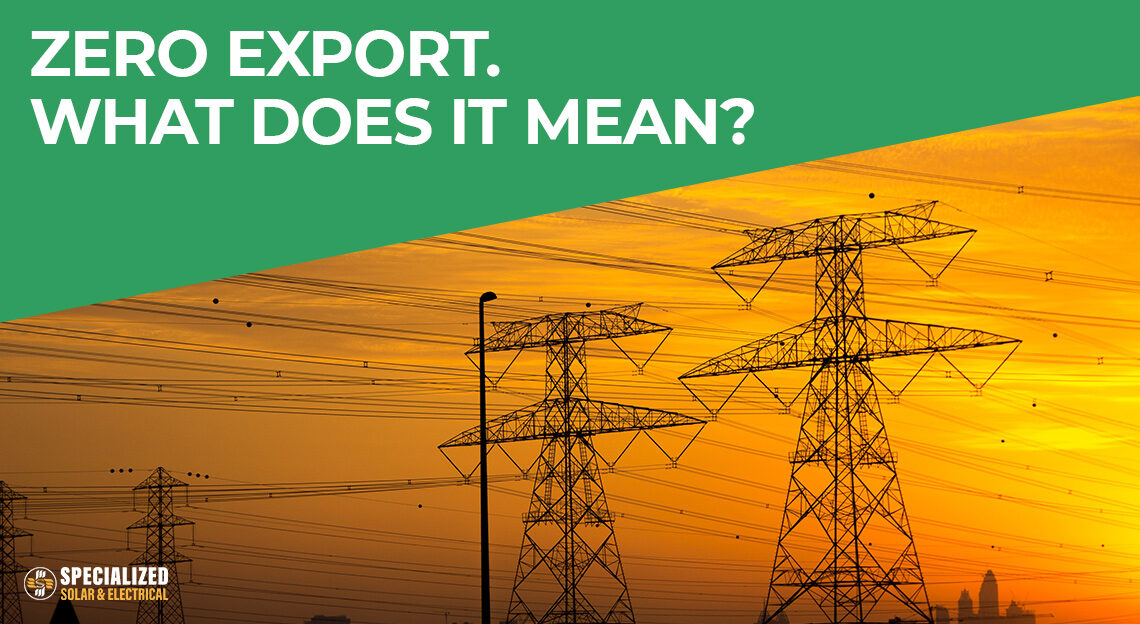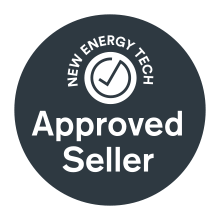Before a new solar panels system can be installed, it must first be approved for connection to the electricity grid by the local network distributor. Generally, this happens without a hitch. But in a minority of cases, would-be solar owners are sometimes told their property is zero export limited for solar.
If you get export limited, is it still worth going solar?
First, it’s important to know that you are still allowed to install solar panels if you get a zero export limit. The zero export limit is purely a restriction on the amount of surplus solar electricity you are allowed to send to the grid. You can still generate solar power – and you can still use it in your home or store it in a battery.
Second, it’s worth knowing that even if you are export limited, going solar can still be financially worthwhile. That’s because, these days, the name of the game is to maximise the amount of solar electricity you use in your home – and minimise the amount you send to the grid. That’s true regardless of whether your home is export limited or not.
This blog explains:
- What ‘zero exports’ means.
- Why network distributors impose zero export limits.
- What happens to the surplus power that can’t be exported to the grid.
- Why solar is still beneficial even with zero exports.
What does ‘zero exports’ mean?
A zero export limit is where your local network distributor – the company who owns the electricity poles and lines – states that you cannot export any surplus electricity from your proposed solar power system to the electricity grid.
Zero export limits are set on a property-by-property basis. The only way to know whether your property is zero export limited is by sending an application to your local network distributor requesting permission to install a solar panel system. This application is sent by your Solar Retailer to the network distributor prior to installing the system.
For example, let’s say you want to install a 6.6kW solar panels system on your home. Your Solar Retailer (e.g., Specialized Solar) sends an application to your network distributor (e.g., Powercor) requesting permission to install a 6.6kW solar panels system.
The network distributor will respond in one of three ways:
- Grants approval for installation, with full exports.
- Grants approval for installation, but sets an export limit.
- Grants approval for installation, but sets a zero export limit.
The table below shows what this means in practice.
Export limit example: 6.6kW solar panels system
| Requested system: 6.6kW | Size system you can install | Amount of electricity you can export to the grid |
|---|---|---|
| Grant approval for installation, with full exports | 6.6kW | 6.6kW |
| Grant approval for installation, but set an export limit | 6.6kW | Capped at an amount that’s less than 6.6kW but greater than 0kW |
| Grant approval for installation, but set a zero export limit | 6.6kW | 0kW |
It’s worth reiterating that an export limitation only limits the amount of energy you can send back to the grid, not what you can consume at any given time. You can still install solar panels even if you get a zero export limit. What’s more, you can use the energy generated by your solar panels in your home – there’s no limit on that!
In practice, export limiting is achieved using hardware that limits the amount of power your solar inverter can export to the grid. Some inverters have export limiting as a built-in feature; with other inverters this requires additional hardware.
What happens to the surplus power that can’t be exported to the grid?
There are two ways of handling it:
- You store it and use it later (this requires battery storage, or another form of storage like an electric heat pump hot water system), or
- It disappears into thin air via a heat sink.
Letting clean solar energy go to waste is something no-one wants. That’s why it’s worth considering storage options if you are export limited.
Why do network distributors impose zero exports?
The reason why zero export limiting is in place is because there is so much rooftop solar and the electricity grid sometimes struggles to handle it.
On very sunny days, lots of homes are generating solar electricity and exporting it to the grid. When the grid gets overloaded with more solar exports than it can handle, the result is power surges. There can also be a drop in the quality of electricity, and, in the worst case, power outages can occur.
Network distributors impose export limits to manage the flow of electricity onto the grid and maintain quality and reliability.
But if you do get export limited, it doesn’t necessarily mean forever. Network distributors are starting to upgrade their infrastructure. Some distributors, such as Powercor, have already started contacting households who were export limited with the good news that their export limit has been lifted.
Is solar still beneficial, even with zero exports?
It’s true that if you are export limited you won’t be able to get a feed-in tariff for your surplus solar power.
But with the feed-in tariff at historically low levels (the Victorian minimum feed-in tariff is now only 6.7 cents/kWh), it’s not really worth bothering about.
The real savings are when you use your solar electricity in your home instead of buying it from the grid. With grid electricity costing around 25-30 cents per kilowatt hour, avoiding this cost by using your free solar power saves money right away.
Let’s take the example of the typical Australian family who uses 20 kilowatt hours of electricity a day and pays 30 cents per kilowatt hour for grid electricity. If they were to buy all their electricity from the grid, it would cost $6.00 a day. By using their solar to supply 50% of their daily electricity needs, this family would be saving $3.00 a day. If they increase their solar electricity consumption to 75% of their total daily electricity requirements, the savings rise to $4.50 a day.
And this is just for starters.
Other ways this family could maximise the use of their solar electricity in their home and cut their energy bills further include:
- Use timers on appliances to run them in the middle of day during solar-producing hours.
- Invest in a Wi-Fi enabled reverse-cycle air conditioning system to heat and cool their home using their solar electricity.
- Switch from gas hot water heating to an electric heat pump hot water system, running off solar.
- Use the advanced monitoring capabilities in modern solar inverters to get real-time information on how electricity is being used in the home (both solar and grid power).
- Get battery storage installed and run the home on solar 24/7.
- Join a Virtual Power Plant program and export stored battery power for a lot more than the feed-in tariff.
- Install EV charging system to charge an electric car for free with solar.
As you can see, there are a lot of ways you get maximise the value from your solar panels system – and many of these offer a lot more value than the solar feed-in tariff.
Get in touch
If you have any questions about export limitations, or would like a quote for a solar system, get in touch. We can advise and quote on:
- Solar panels systems
- Solar battery storage (both grid-connect and off-grid)
- Solar monitoring systems
- Reverse-cycle air conditioning systems
- Electric heat pump hot water systems
- EV chargers
In addition, we are a Registered Electrical Contractor employing a team of A-grade electricians. So, if you’re wondering about the best way to power your home, pre-wiring for a EV charging system, single-phase or three-phase power etc, complete our enquiry form or call us on 03 9117 6185.












